Fusion 260 Draw Circle Away From Origin
The March 2020 Fusion 360 update brought several enhancements to 3D Sketching. Make sure yous have version 2.0.7805 or newer.
Before the update, 3D Sketches were cumbersome and hard to handle. Creating 3D sketches required the utilise of the Move command. It proved to be a ho-hum and disruptive process, unlike 3D Sketching from competitors, such as Solidworks.
- Sketch Commands Supported by 3D Sketch
- Sketch Constraints Supported by 3D Sketch
- Differences Between 2nd and 3D Sketching
- When to Employ 3D Sketches
- Create a 3D Sketch in Fusion 360
- Practice a 3D Sketch – Sweep a Side Tabular array
Sketch Commands Supported past 3D Sketch
This Fusion 360 update brings new 3D sketching behavior to the following sketch features:
- Line
- Rectangle tools
- Point
- Spline tools
- Circle tools
- Conic Bend
- Ellipse
- Polygon
Sketch Constraints Supported past 3D Sketch
3D Sketches also support the use of the following sketch constraints:
- Horizontal/Vertical
- Coincident
- Tangent
- Equal
- Parallel
- Perpendicular
- Gear up/Unfix
- Midpoint
- Concentric
- Colinear
- Curvature
With these enhancements, yous now immediately encounter origin axes, planes, and rotational manipulators to help create your 3D sketch.
Moving from one sketch aeroplane to some other is as easy as moving your mouse cursor in the direction you desire to sketch. Guidelines so appear to help you lot understand where the sketch is going to be in 3D infinite.
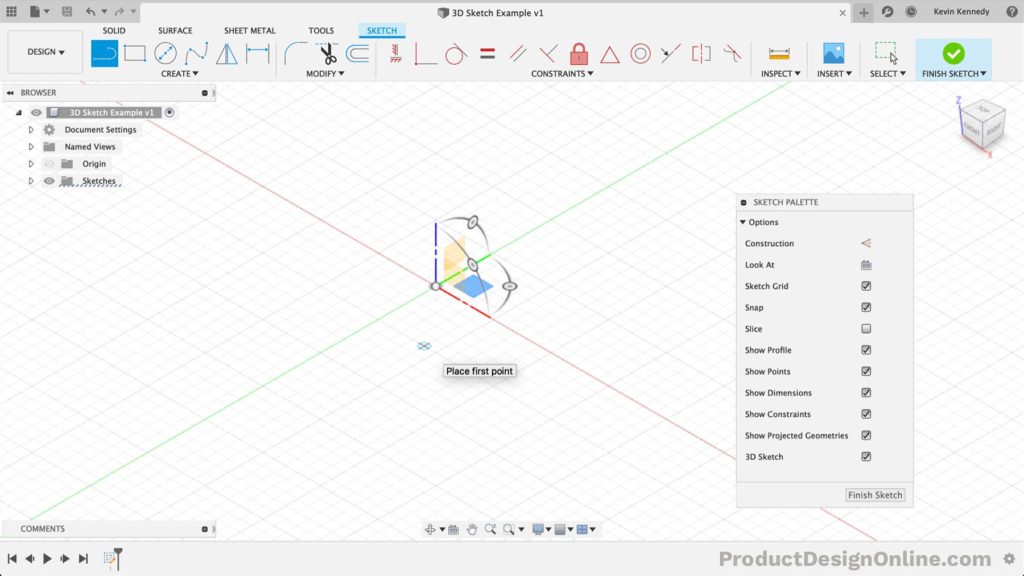
Differences Between 2D and 3D Sketching
In a 2d Sketch, we constrain sketch geometry to the airplane used to create the sketch. You tin can create a new 2D sketch on each of the post-obit:
- XY, YZ, or XZ origin planes
- Faces
- Structure planes
A 2D sketch plane can originate anywhere in 3D infinite. However, the selected plane restricts sketch geometry to that plane.
With a 3D sketch, Fusion 360 removes the planar brake allowing you to create sketch geometry anywhere in 3D space.
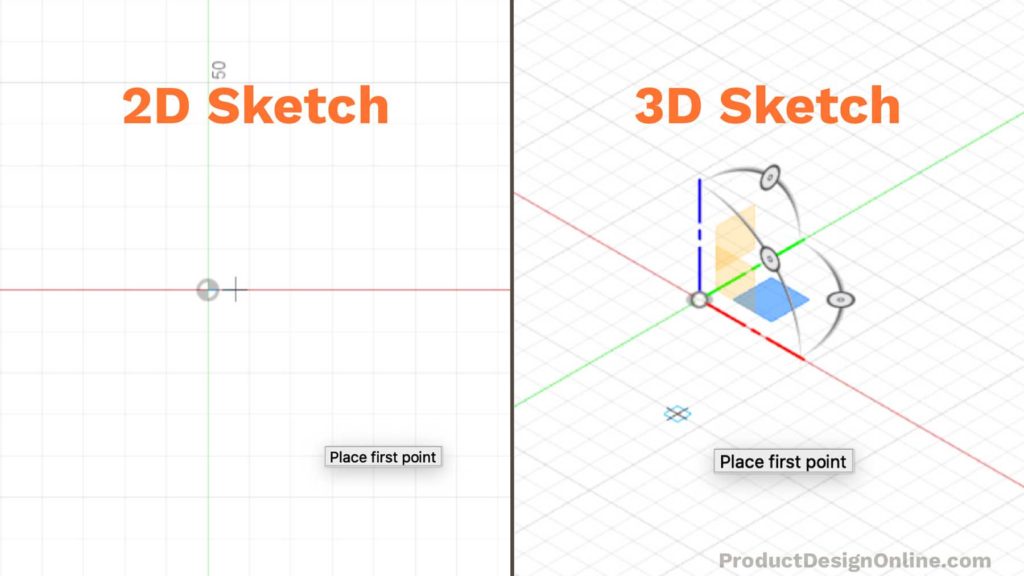
It'south important to notation that 2d sketches besides exists as an individual Sketch feature in the parametric timeline. You'll often have several different sketch features that make up a pattern.
Reverse, 3D sketches volition be i single sketch feature in the timeline.
Sketch dimensions and constraints tin sometimes exist harder to update and manage with 3D sketches – making the concept ofdesign intent harder.
Knowing when to use a 3D sketch instead of a 2D sketch can make all the departure.
When to Use 3D Sketches
There's no question that 3D sketches come with extra complication. That may have you wondering, "When should I utilise a 3D Sketch?"
In short, use a 3D sketch to create a path for tubing, sweeps, lofts, or surface edges, when the design continues to multiple planes.
Use a 2D Sketch to create planar (flat) sketch geometry for common features like extrude and circumduct.
3D Sketches are too good for:
- Routing
- Sweep Path
- Guide Bend
- Surface Extrudes
- Curve-Driven Patterns
- Split (Body) Lines
- Assembly skeletons
In summary, use a 3D sketch if information technology will save time creating the model when compared to using traditional planes and 2D Sketches.
3D sketch case objects:
- Wheel handlebars
- Shower caddy
- Axe head
- Furniture with continuous shapes
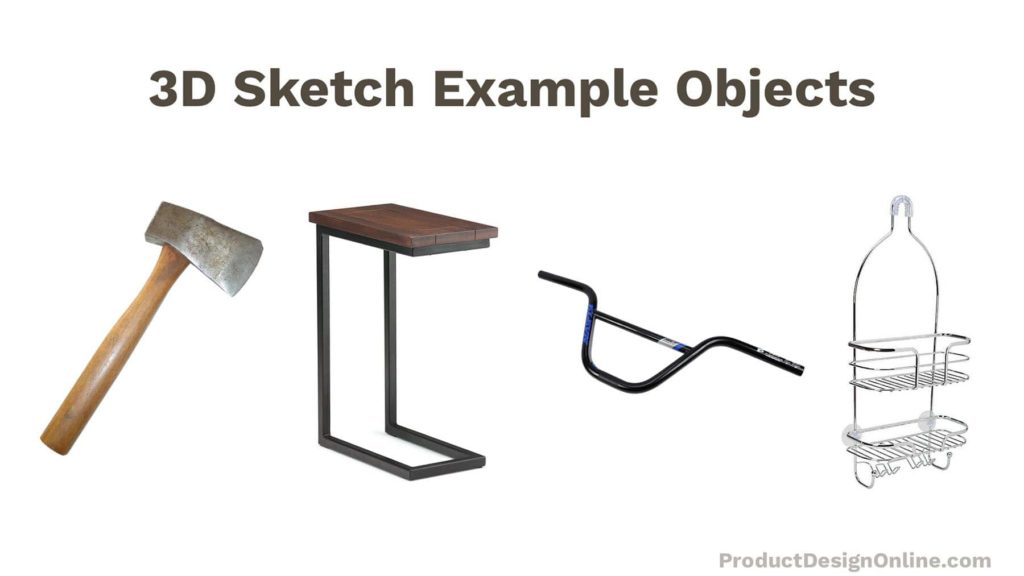
Create a 3D Sketch in Fusion 360
- Select theSolid tab in theBlueprint workspace. SelectCreate Sketch in the toolbar.
- Select the initial plane or face to begin the sketch on.
- Check the3D Sketch box in theSketch Palette.
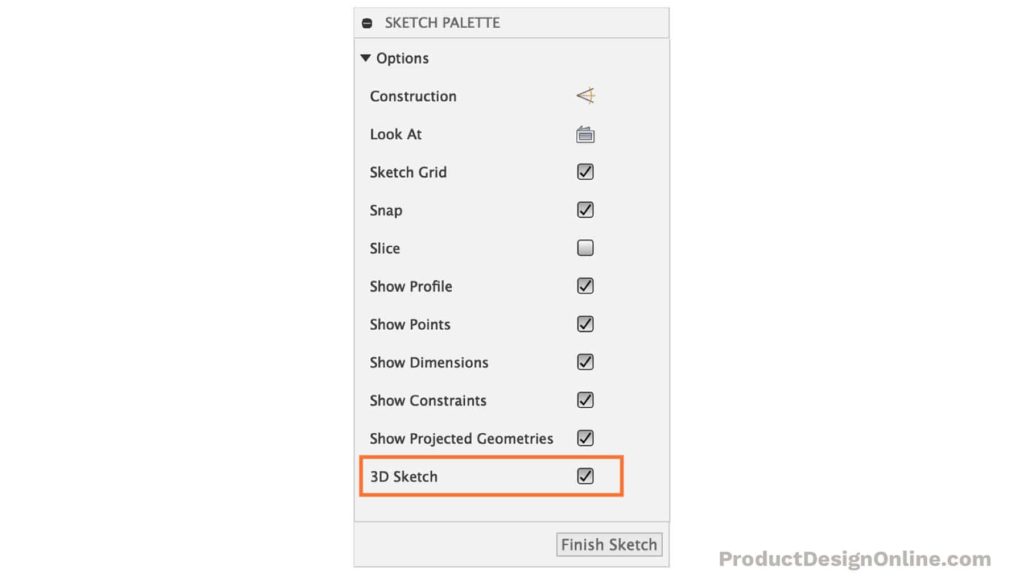
- Select one of the sketch commands supported past3D Sketch. The 3D Sketch Manipulator will appear at the default location (0,0,0).
- Select a sketch plane or suit the3D Sketch Manipulator. If desired, switch to a different sketch plane by selecting it (XY, YZ, or XZ) or rotate the sketch aeroplane by dragging any rotation handle.
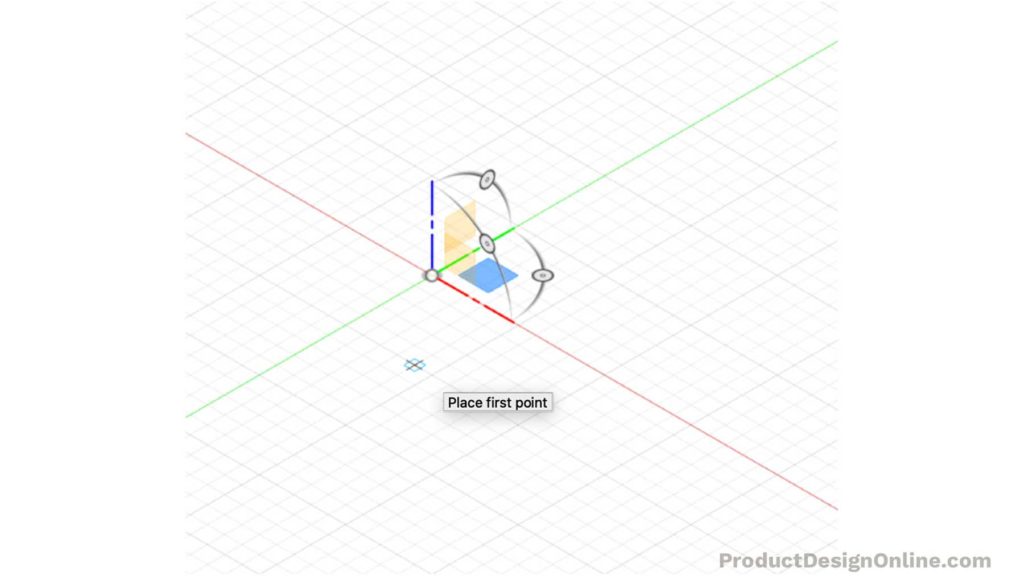
- Click anywhere on the active sketch aeroplane to create the offset sketch point. Hover along the centrality until its extension line displays, and then click to place the bespeak to restrict the betoken along an axis.
- Continue to place sketch points as desired. The origin of the3D Sketch Manipulator will shift to the last signal yous placed, as you place 3D sketch points.
- ClickStop Sketch in the toolbar to stop the sketch.
Practice 3D Sketch – Sweep a Side Tabular array
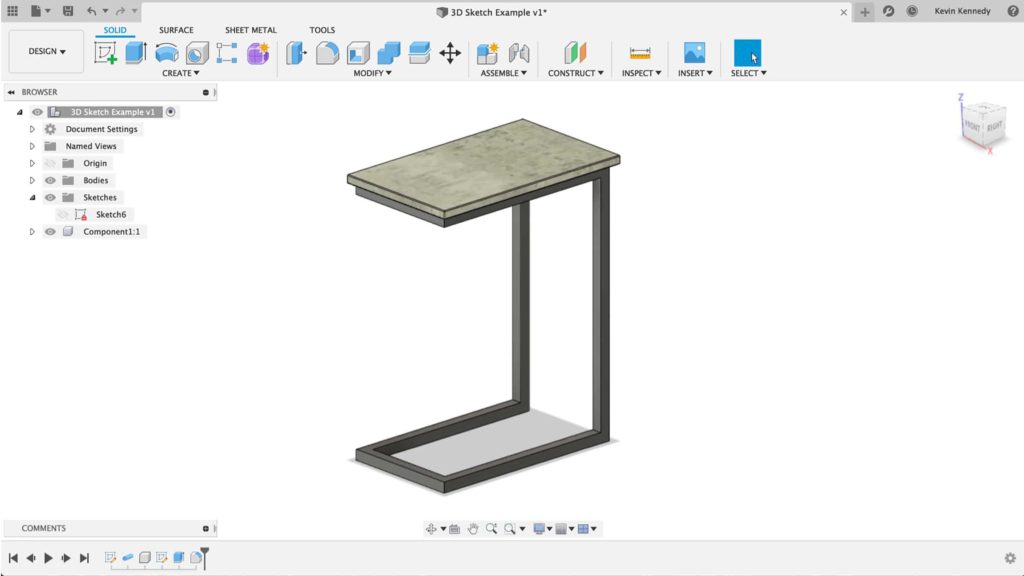
Fourth dimension needed:20 minutes.
I happened to come across this "C Side Table" on Amazon and thought it was the perfect 3D Sketch beginner project.
This tabular array design could theoretically use 2nd Sketches. Notwithstanding, we tin can make the tablemuch faster using 3D sketches.
- SelectCreate Sketch in the toolbar
Showtime the sketch past selecting the XY origin plane. We'll click this aeroplane to showtime by drawing the bottom of the table every bit if it were sitting on the basis.
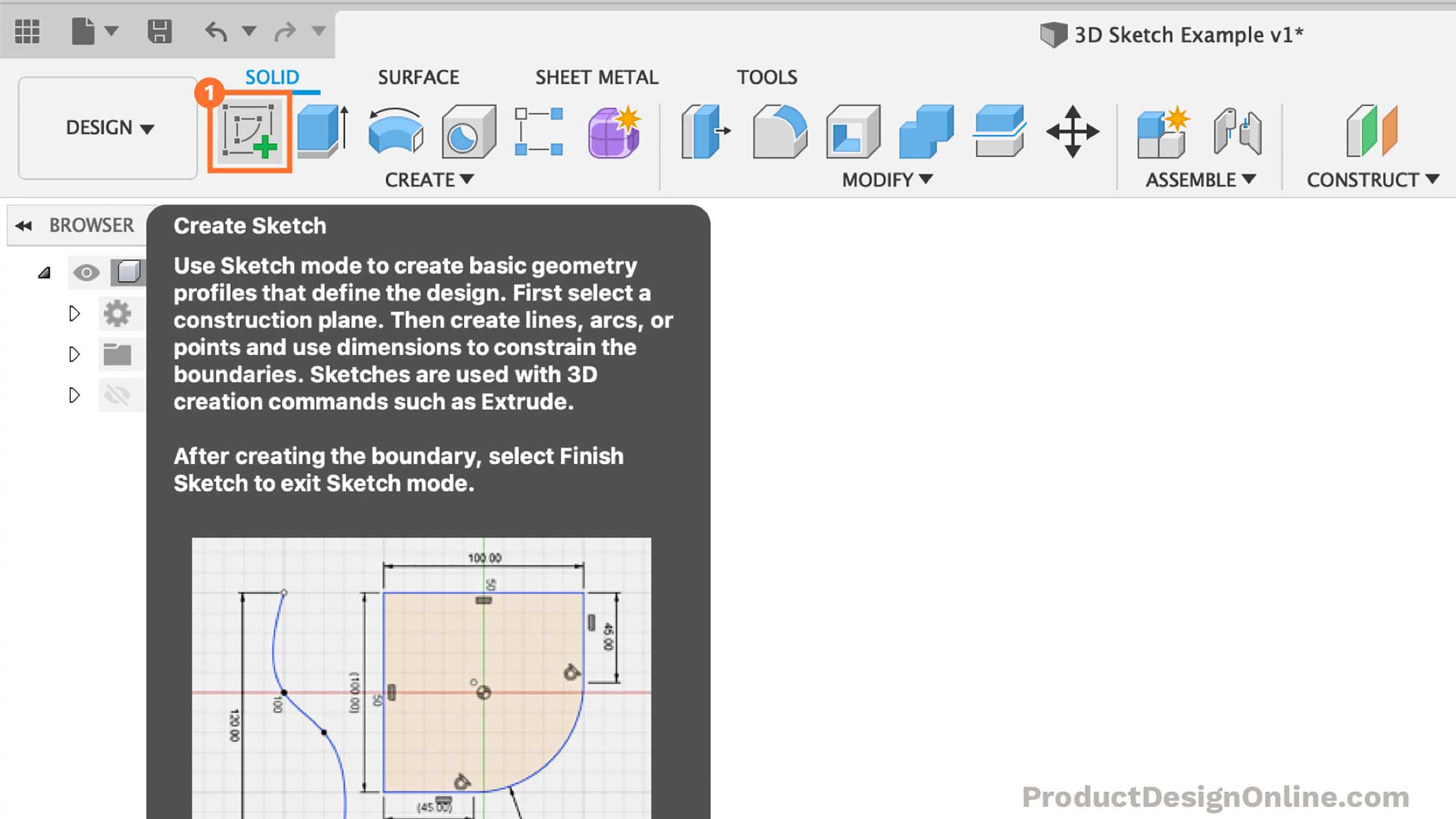
- Turn on 3D Sketch
Select the 3D Sketch checkbox in the Sketch Palette to turn it on.
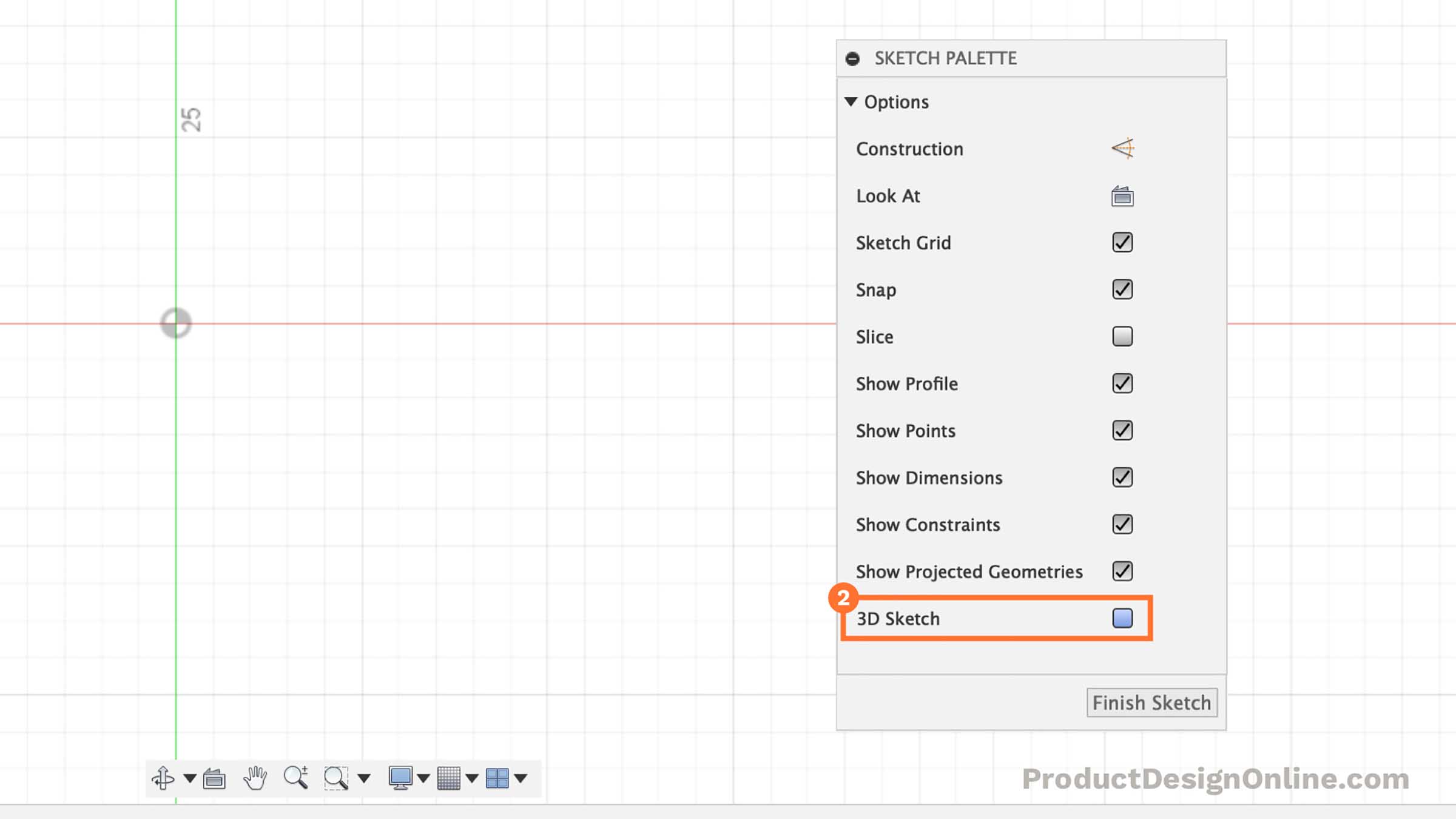
- Activate Line & Home View
Select the line feature in the toolbar or hit the keyboard shortcut "L." Select the "Dwelling" position side by side to the ViewCube. This will assistance us sketch in iii-dimensions.
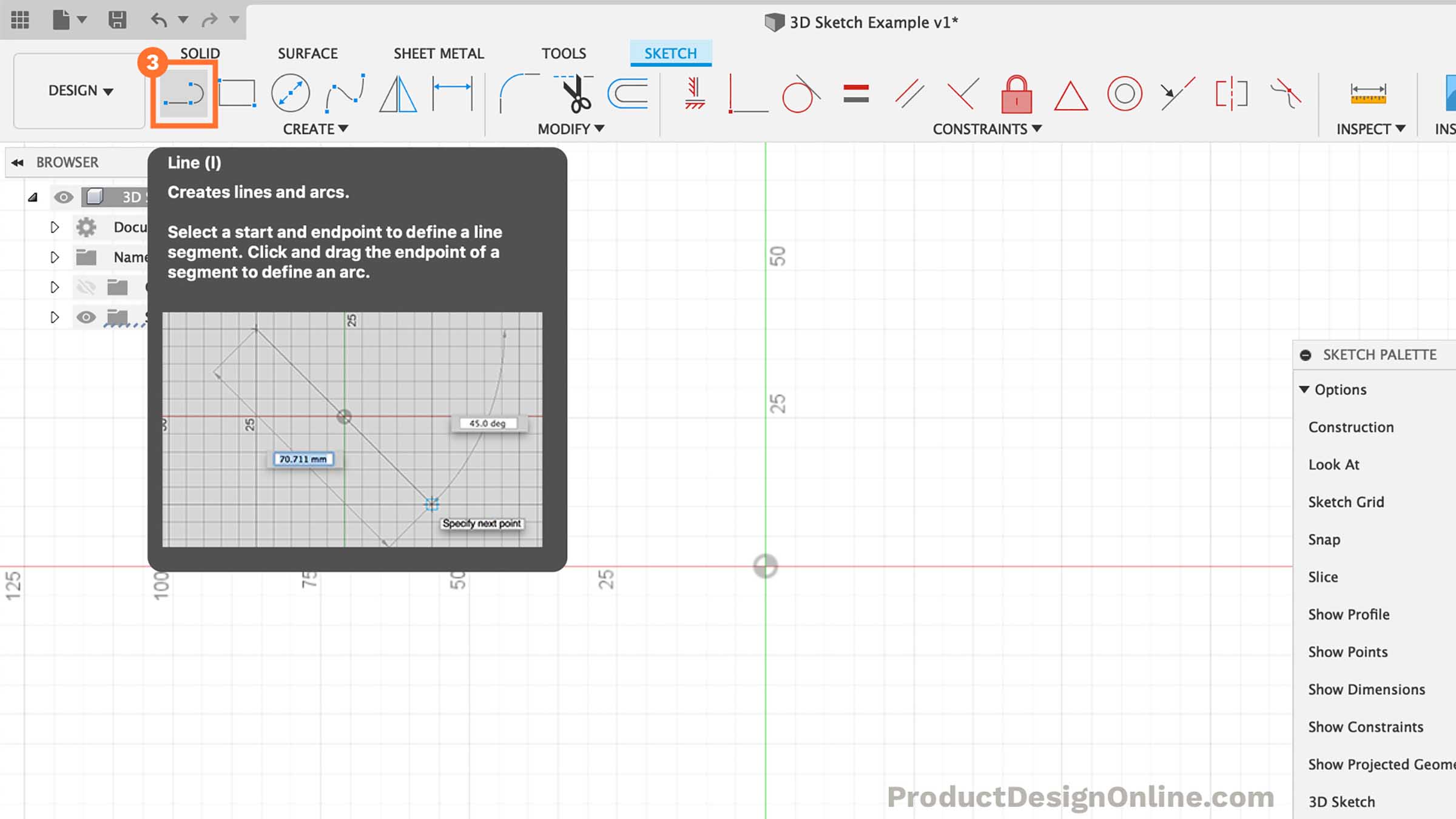
- Describe First Line from Origin
At this bespeak, we can first the line by setting the first bespeak at the origin point.
Similar to a 2D sketch, we will drag our mouse cursor along the green Y-centrality. Type out 45cm for the length and so click where the line snaps into the Y-axis. Fusion 360 will automatically add together a "horizontal/vertical" constraint for the states.
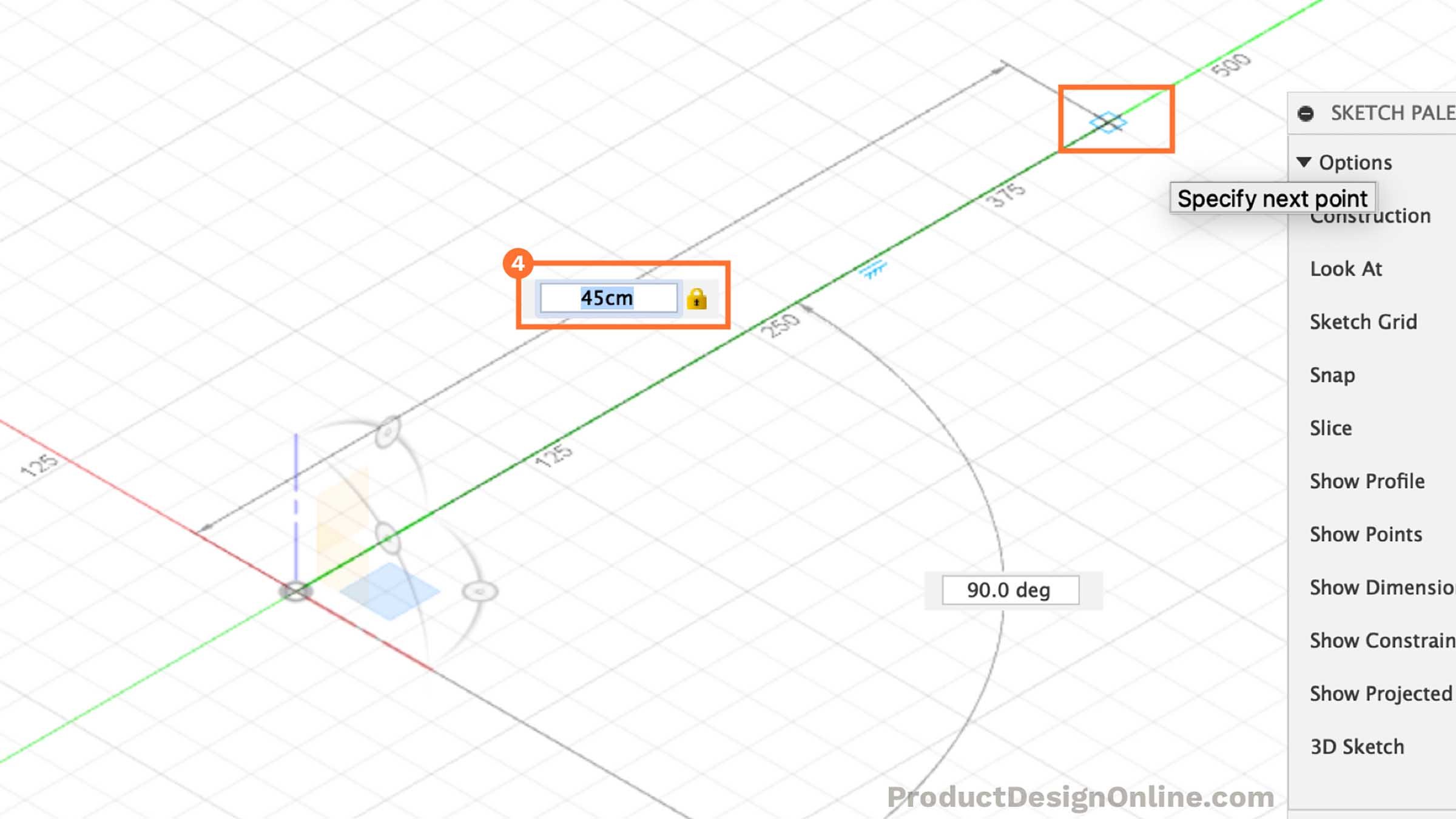
- Depict Line Straight Up
We tin get-go to sketch the height of the tabular array by moving our mouse cursor to the blue z-axis. The cursor should snap to the z-centrality when close.
Blazon out 60cm for the superlative. Carefully select the blue z-centrality to set the line, making sure it automatically add a vertical constraint.
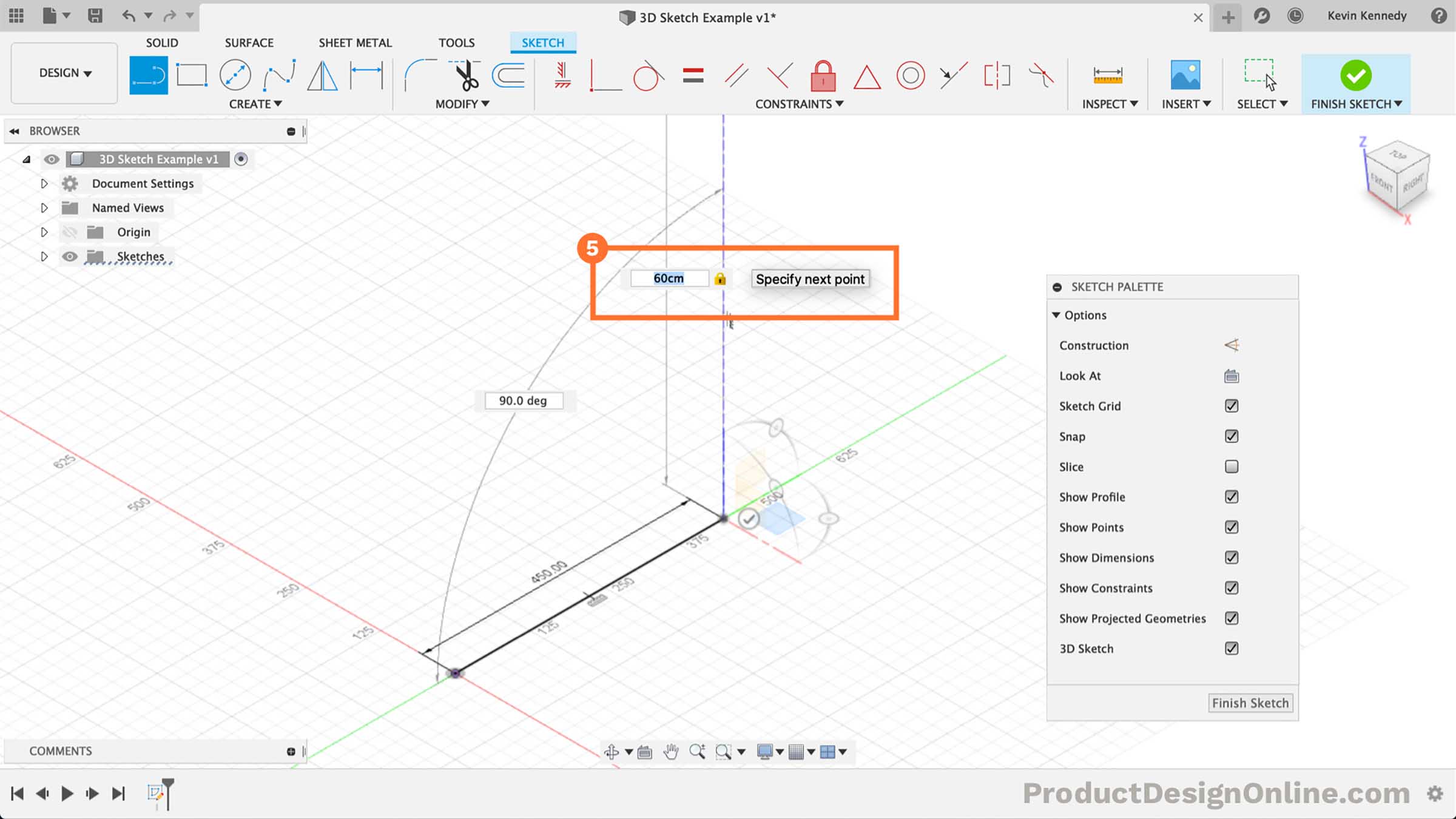
- Heading Back Toward Center
For the 3rd line, nosotros'll want to head dorsum toward the center, while following the green y-axis. If you haven't already noticed, see that the origin planes move to the end of our line while in 3D sketch mode.
This is where things start to get tricky with 3D Sketches. We don't want to overuse sketch dimensions. Instead of typing out a dimension, click to identify the line forth the y-axis.
Shift-click the endpoints of the line we just placed and the origin point or the original starting signal of our showtime line. Select the "horizontal/vertical" constraint in the toolbar. This will ensure they stay the same length while making it easy for us to update merely one dimension.
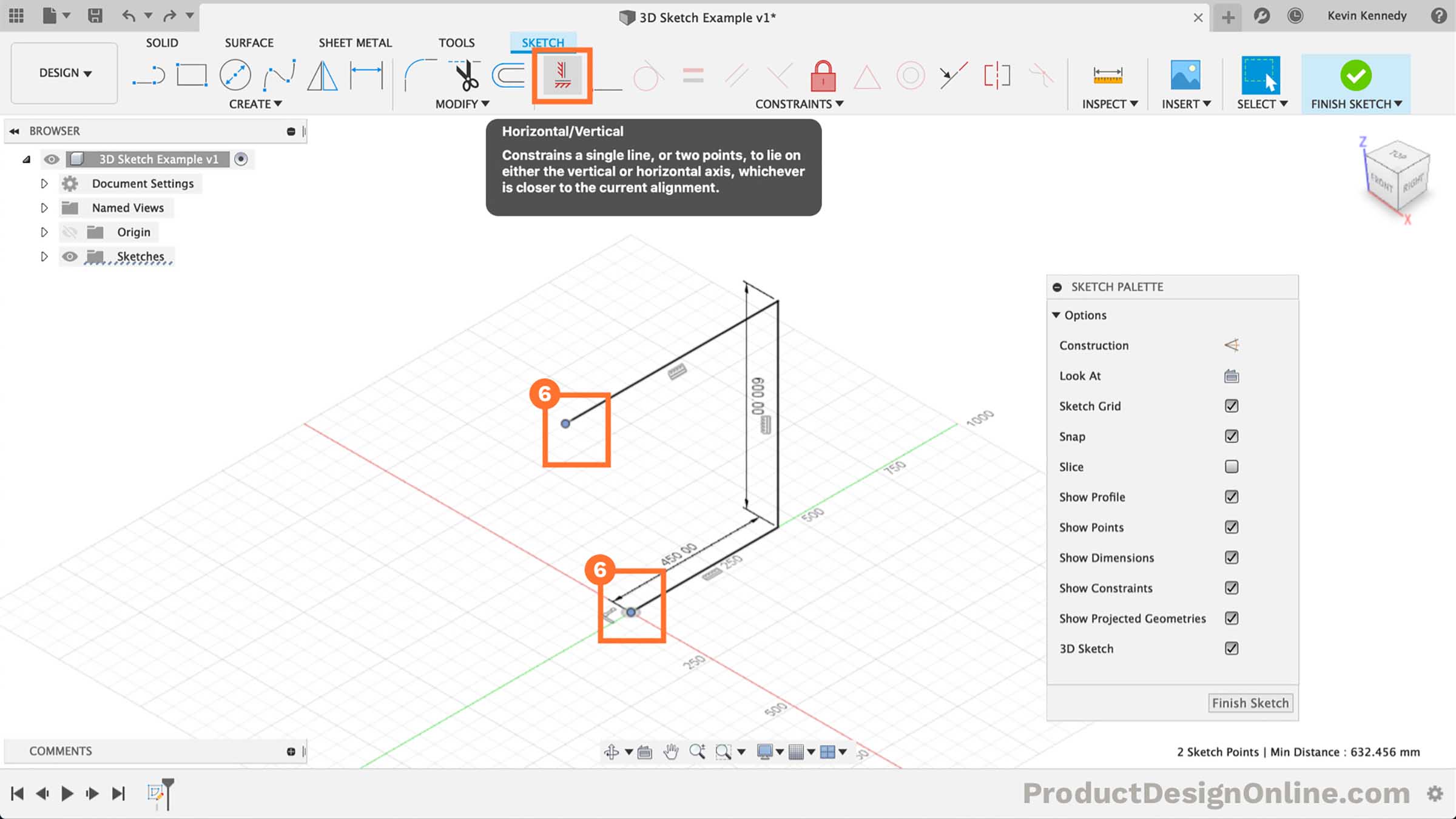
- Reactivate Line Command
Select the line feature in the toolbar. Select the endpoint of the line nosotros just placed.
The 3D sketch planes and manipulators volition reappear one time you lot select the endpoint.
For this line, nosotros'll blazon out25cm for the width. Brand sure to snap the line in place along the carmine x-axis.

- Heading Back to the Right
We'll at present want to create a line heading dorsum to the right.
Since we've already defined our length, we'll want to employ sketch constraints instead of sketch dimensions for this one. Click along the green y-axis where the line snaps in at the same length of the opposite line.
Hit the "Escape" key on your keyboard. Shift-click the endpoint of this line and the opposite line. Select the "Horizontal/Vertical" Constraint in the toolbar. This will strength the line to stay the same length.
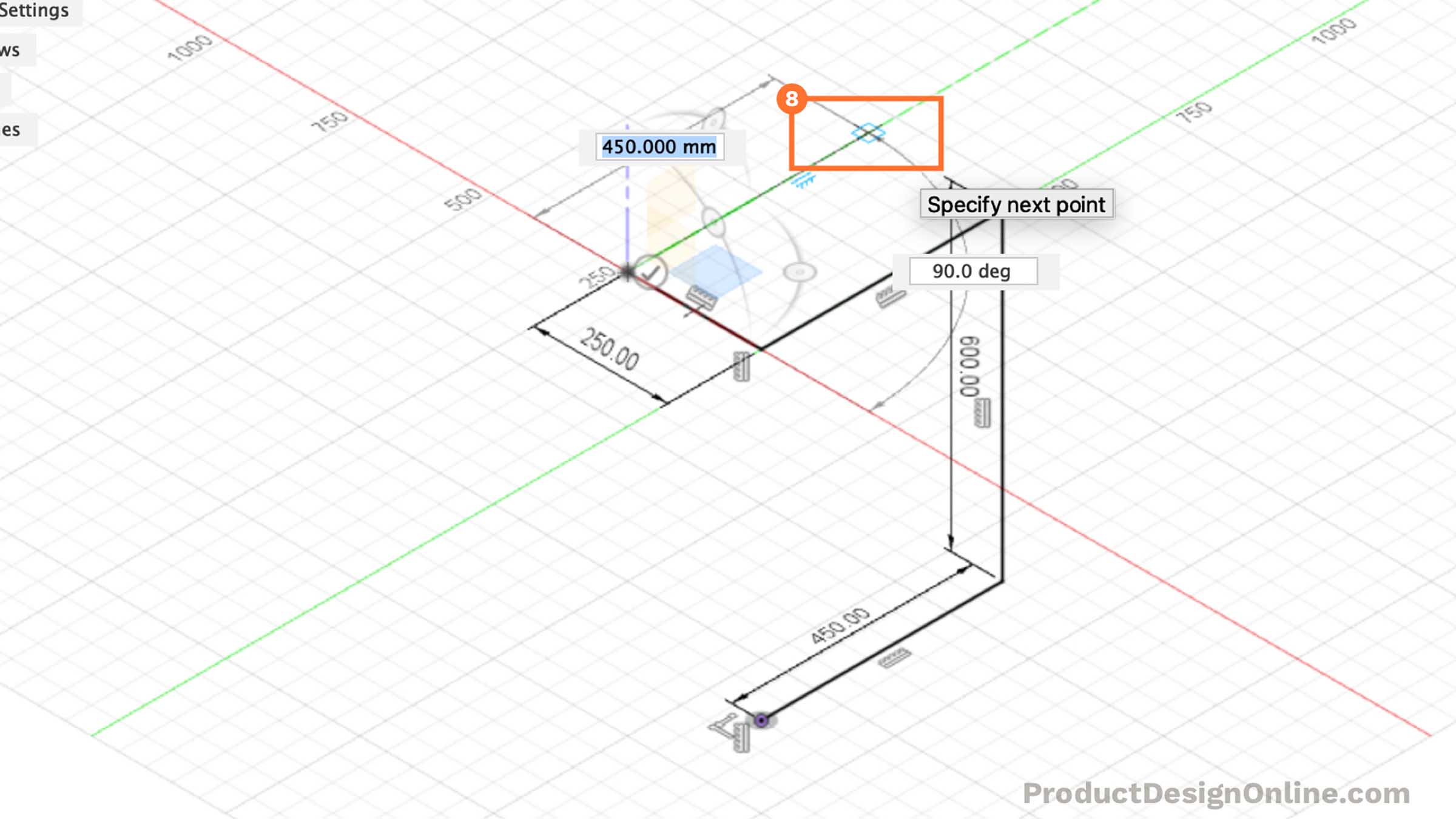
- Heading Directly Down
Reactivate the line control in the toolbar. Select the endpoint of the last line nosotros created.
Heading direct downward, click to identify the line along the blue z-axis where it snaps equidistant to the reverse line. The line should be 60cm.
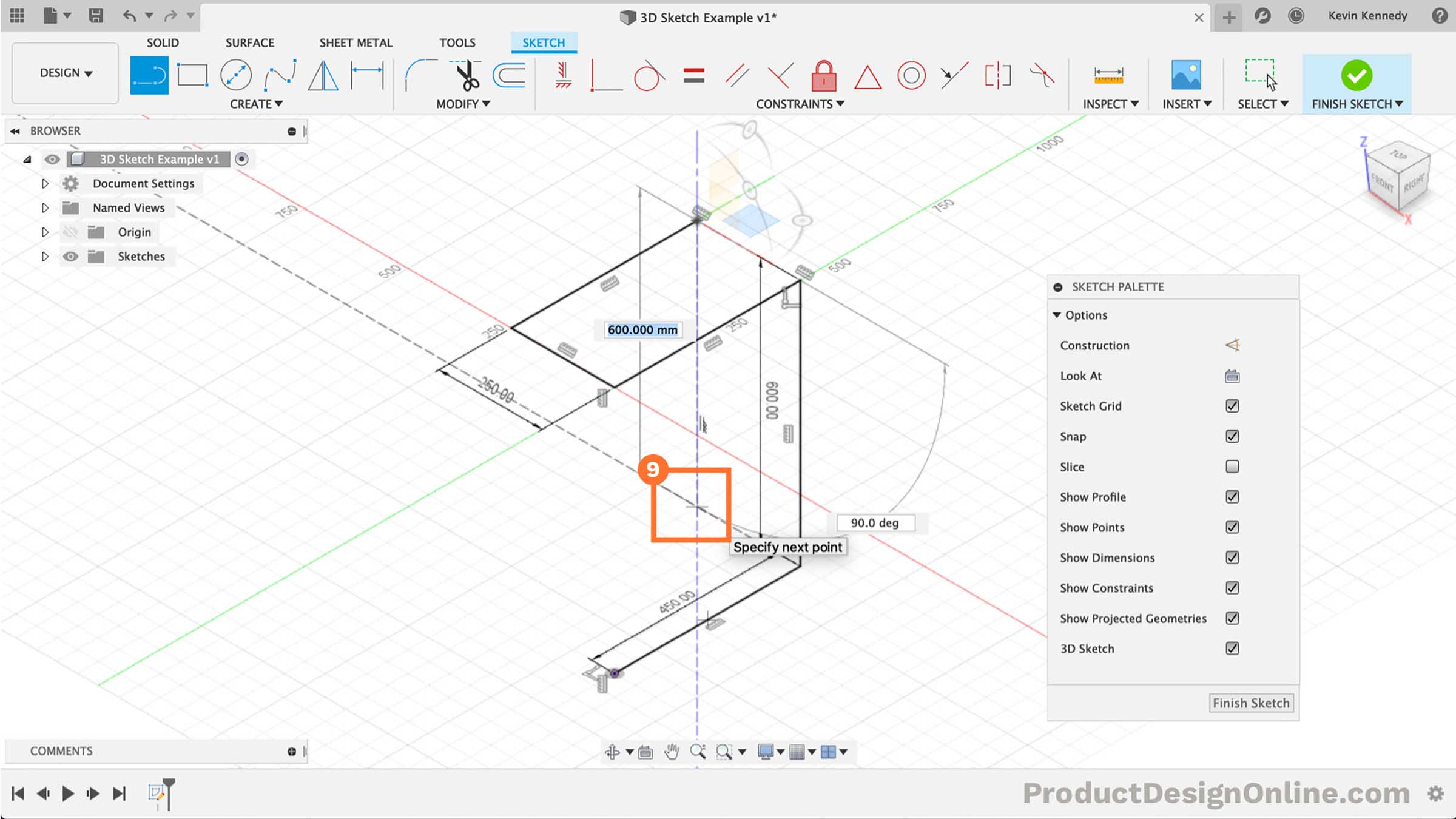
- Finishing off The Lines
Allow'due south stop off the lines by mimicking the "C" shape on the opposite side.
Place the first endpoint at the reddish y-axis. Create the 2d line by clicking the origin point.
Hitting the "escape" cardinal to articulate the line command.
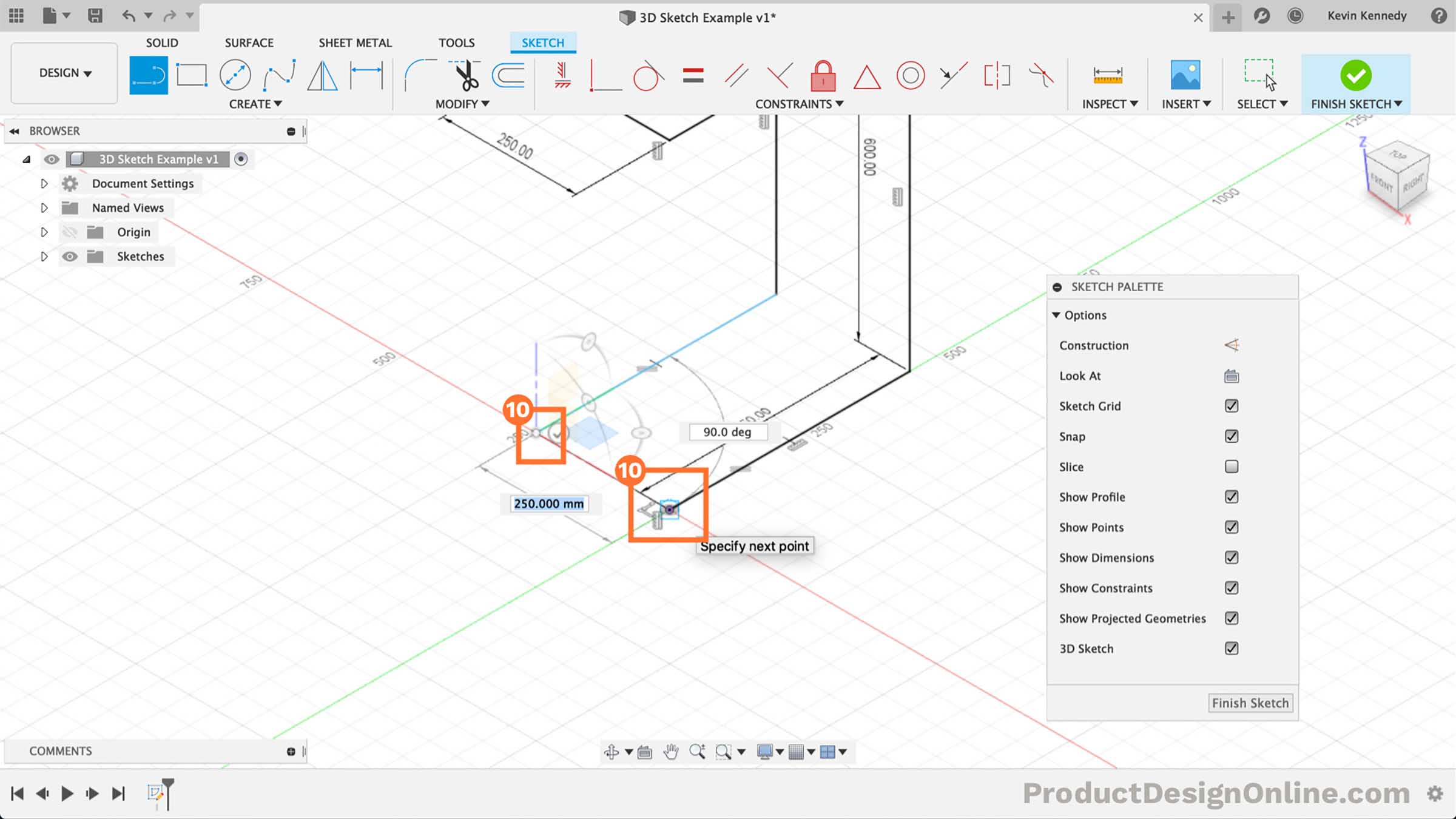
- Calculation the Final Constraints
To ensure our sketch is fully-constrained, nosotros'll need to add together the terminal constraints.
It appears the terminal line created does non have a constraint forcing it to remain in 1 direction. Simply select the line so select the "Horizontal/Vertical" constraint in the toolbar.
Our sketch is now fully-constrained. We can double-check this by looking for the red lock icon next to the Sketch name in the Browser.

- Turning the Sketch into Pipes
Our sketch is now complete. We're ready to employ the Piping command to turn the sketch into furniture.
Select theSolid tab in the toolbar. SelectPipe from theCreate dropdown. Select the 3D sketch geometry.
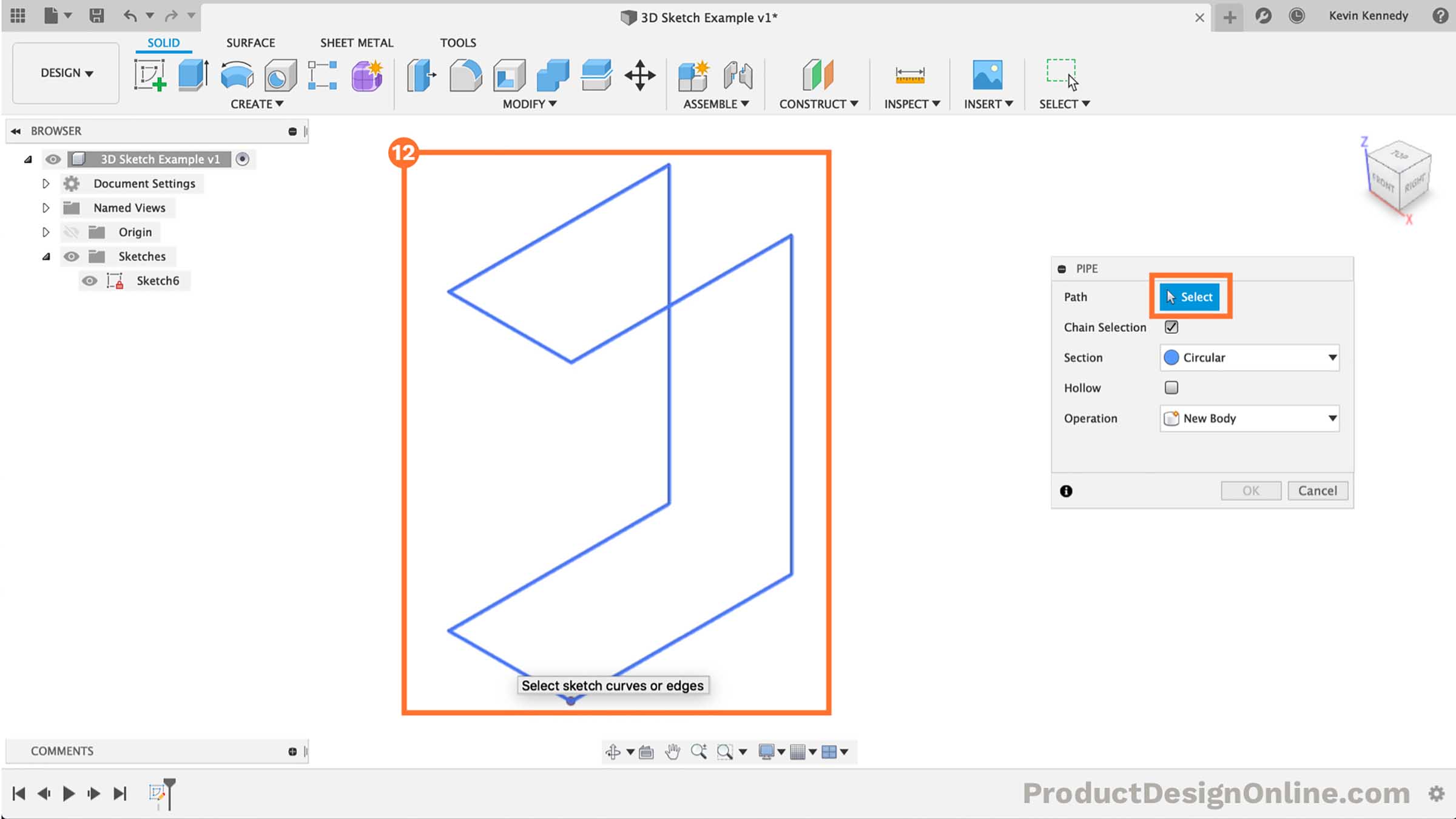
- Adjusting the Pipe Features
We'll want to prepare theSection blazon toSquare. Nosotros can likewise change the thickness of the piping by changing the section size.
I've entered2.5cm for thesection size.
Select the "Hollow" checkbox, which displays thedepartment thickness. For the section thickness type out2mm.

- Congrats and Adjacent Steps
You've now completed the 3D Sketch! End off the model by adding boards to the acme – or whatsoever surface you want!
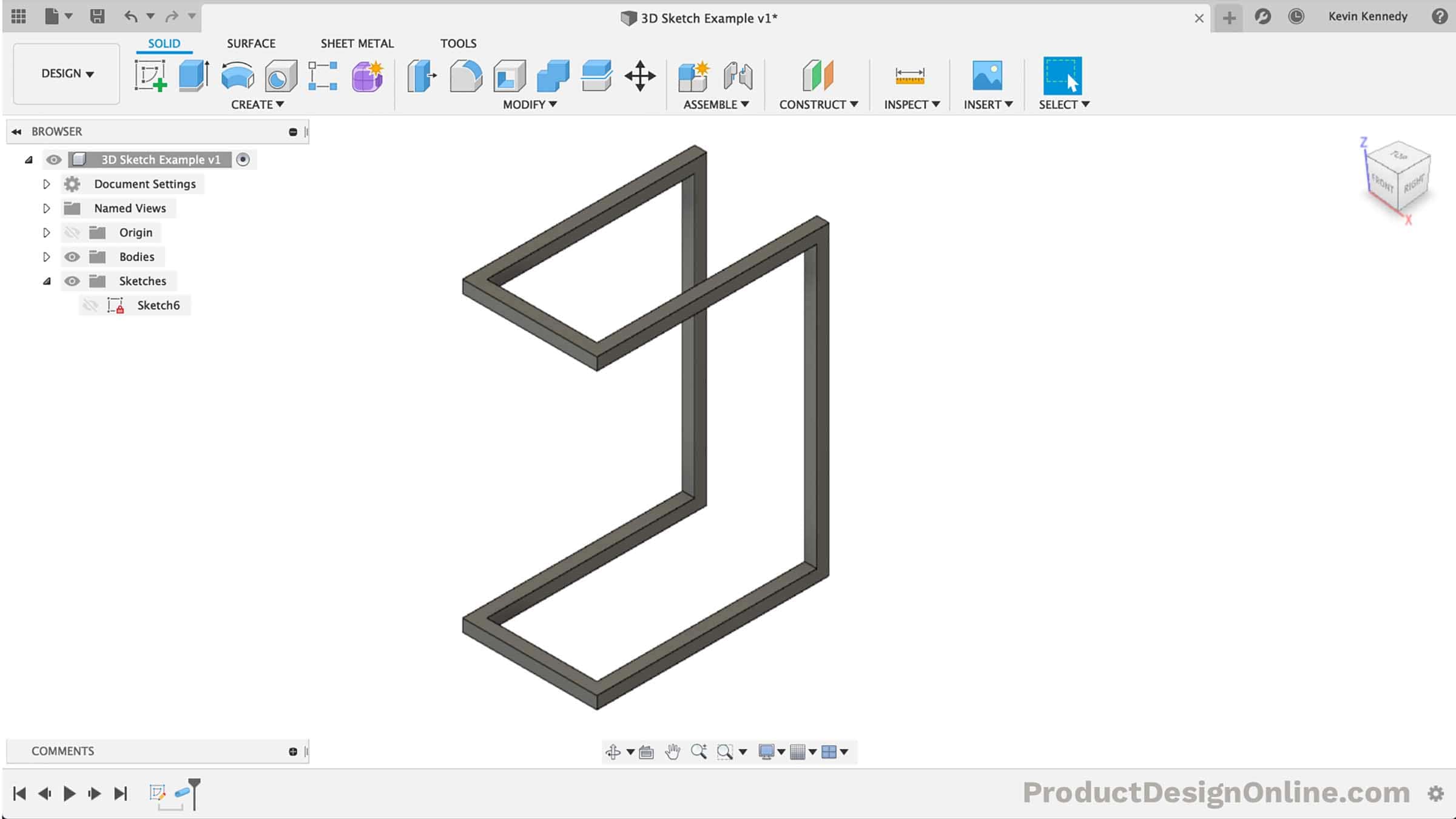
hagenauersorpathey1961.blogspot.com
Source: https://productdesignonline.com/fusion-360-tutorials/introduction-to-3d-sketching-in-fusion-360/